A Population Perspective on the Steady State Economy
by Herman Daly
A steady state economy is defined by a constant population and a constant stock of physical capital. In a way, it is an extension of the demographer’s model of a stationary population to include non-living populations of artifacts, with production rates equal to depreciation rates, as well as birth rates equal to death rates. The basic idea goes back to the classical economists and was most favorably envisioned by John Stuart Mill.
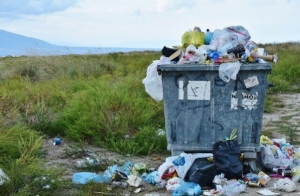
Waste is the final product of converting nature into ourselves and our stuff and then using up or wearing out our stuff. (Image: CC0, Credit: RitaE).
The population problem should be considered from the point of view of all populations—populations of both humans and their things (cars, houses, livestock, crops, cell phones, etc.)—in short, populations of all “dissipative structures” engendered, bred, or built by humans. Both human bodies and artifacts wear out and die. The populations of all organs that support human life, and the enjoyment thereof, require a metabolic throughput to counteract entropy and remain in an organized steady state. All of these organs are capital equipment that supports our lives. Endosomatic (within skin) capital—heart, lungs, kidneys—supports our lives quite directly. Exosomatic (outside skin) capital supports our lives indirectly and consists both of natural capital (e.g., photosynthesizing plants, structures comprising the hydrologic cycle) and manmade capital (e.g., farms, factories, electric grids).
In a physical sense, the final product of the economic activity of converting nature into ourselves and our stuff, and then using up or wearing out what we have made, is waste. What keeps this from being an idiotic activity—depleting and polluting, grinding up the world into waste—is the fact that all these populations of dissipative structures have the common purpose of supporting the maintenance and enjoyment of life. As John Ruskin said, “there is no wealth but life.”
Ownership of endosomatic organs is equally distributed, while the ownership of exosomatic organs is not, a fact giving rise to social conflict. Control of these external organs may be democratic or dictatorial. Our lungs are of little value without the complementary natural capital of green plants and atmospheric stocks of oxygen. Owning one’s own kidneys is not enough to support one’s life if one does not have access to water from rivers, lakes, or rain, either because of scarcity or monopoly ownership of the complementary exosomatic organ. Therefore all life-supporting organs, including natural capital, form a unity with a common function, regardless of whether they are located within the boundary of human skin or outside that boundary.
Our standard of living is traditionally measured by the ratio of manmade capital to human beings—that is, the ratio of one kind of dissipative structure to another kind. Human bodies are made and maintained overwhelmingly from renewable resources while capital equipment relies heavily on nonrenewable resources as well. The rate of evolutionary change of endosomatic organs is exceedingly slow; the rate of change of exosomatic organs has become very rapid. In fact, the collective evolution of the human species is now overwhelmingly centered on exosomatic organs. We fly in airplanes, not with wings of our own. This exosomatic evolution is goal-directed, not random. Its driving purpose has become “economic growth” and that growth has been achieved largely by the depletion of non-renewable resources.
Although human evolution is now decidedly purpose-driven, we continue to be enthralled by the neo-Darwinist aversion to teleology and devotion to random. Economic growth, by promising more for everyone, becomes the de facto purpose, the social glue that keeps things from falling apart. But what happens when growth becomes uneconomic; when it begins to increase environmental and social costs faster than production benefits? How do we know that this is not already the case? If one asks such questions, one is told to talk about something else, like space colonies on Mars, or unlimited energy from cold fusion, or geo-engineering, or the wonders of globalization, and to remember that all these glorious purposes require growth, in order to provide still more growth in the future. Growth is the summum bonum—end of discussion!
In light of these considerations, let us reconsider the idea of demographic transition. By definition, this is the transition from a human population maintained by high birth rates equal to high death rates to one maintained by low birth rates equal to low death rates, and consequently from a population with low average lifetimes to one with high average lifetimes. Statistically, such transitions have often been observed as the standard of living increases. Many studies have attempted to explain this correlation and much hope has been invested in it as an automatic cure for overpopulation. “Development is the best contraceptive” is a related slogan, partly based in fact, and partly in wishful thinking.
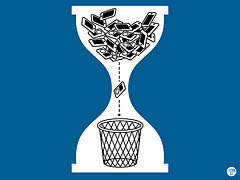
Our products must transform from high production and planned obsolescence to low production and durability. (Image: CC0, Credit: James Provost).
There are a couple of thoughts I’d like to add to the discussion of demographic transition. The first and most obvious one is that populations of artifacts can undergo an analogous transition from high rates of production and depreciation to low ones. The lower rates will maintain a constant population of longer-lived, more durable artifacts. Our economy has a GDP-oriented focus on maximizing production flows (birth rates of artifacts) that keeps us in the pre-transition mode, giving rise to low product lifetimes, planned obsolescence, and high resource throughput, with consequent environmental destruction. The transition from a high maintenance throughput to a low one applies to both human and artifact populations independently. From an environmental perspective, lower throughput per unit of stock (longer human and product lifetimes) is desirable in both cases, at least up to some distant limit.
The second thought I would like to add is a question: Does the human demographic transition when induced by rising standard of living, as usually assumed, increase or decrease the total load of all dissipative structures on the environment? Specifically, if Indian fertility is to fall to the Swedish level, must Indian per capita possession of artifacts (standard of living) rise to the Swedish level? If so, would this not likely increase the total load of all dissipative structures on the Indian environment, perhaps beyond the capacity to sustain the required throughput?
The point of this speculation is to suggest that “solving” the population problem by relying on the demographic transition to lower birth rates could impose a larger burden on the environment, rather than the smaller burden hoped for. Of course, indirect reduction in fertility by automatic correlation with a rising standard of living is politically easy, while direct fertility reduction is politically very difficult. But what is politically easy may be environmentally ineffective.
Also, even if a nation follows the demographic transition and achieves a balance between births and deaths, there is still the problem of immigration. In the USA, Canada, and Western Europe, for example, nearly all population growth is due to net immigration. A mix of genuine humanitarianism and legitimate refugee needs on the one hand, with class-based cheap labor policies and ethnic politics on the other, has made immigration control politically divisive. If population pressure in pre-transition countries is eased by net emigration, while the benefits of population equilibrium in post-transition countries are erased by growth from net immigration, does that not weaken the basic causes of the demographic transition itself? In the face of increasingly open borders, high fertility seems less likely to be brought down by the automatic demographic transition. True, high-fertility immigrants into low-fertility countries eventually adopt the fertility behavior of the receiving country, but that takes a generation or more.
In a finite world, some populations grow at the expense of others. Homo sapiens and Mechanistra automobilica are now competing for land, water, and sunlight to grow either food or fuel. More nonhuman “bodies” will at some point force a reduction in human bodies. This forced demographic transition is less optimistic than the voluntary one induced by chasing a higher standard of living by engendering fewer dependents. In an empty world, we saw the trade-off between products and people as motivated by a desire for a higher standard of living. In the full world, that trade-off is forced by competition for limited resources.
The usual counter to such thoughts is that we can improve the efficiency by which resource throughput maintains dissipative structures. For example, a car that lasts longer and gets better mileage is still a dissipative structure, but with a more efficient metabolism that allows it to live on a lower rate of throughput. Likewise, human organisms might be genetically redesigned to require less food, air, and water. Indeed smaller people would be the simplest way of increasing metabolic efficiency (measured as the number of people maintained by a given resource throughput). To my knowledge, no one has yet suggested breeding smaller people as a way to avoid limiting the number of births and neither do I. We have, however, been busy breeding and genetically engineering larger and faster-growing plants and livestock, as well as building larger exosomatic organs, so that we become smaller relative to the other organisms we depend on, although we remain the same size absolutely. So far in the empty world, the latter dissipative structures have been complementary with populations of human bodies, but in our finite and full world, the relationship has become competitive.
Indeed, if we think of the population as the cumulative number of people ever to live over time instead of those simultaneously living, then many artifact populations have long been competitive with the human population. That is, more consumption today of terrestrial low entropy in non-vital uses (Cadillacs, rockets, weapons) means less terrestrial low entropy available for tomorrow’s vital use of capturing solar energy (plows, solar collectors, dams, windmills). The solar energy that will still fall on the earth for millions of years after the material structures needed to capture it is dissipated, will be wasted, just like the solar energy that currently shines on the barren moon.
If our ethical understanding of the value of “sustainability” (longevity with sufficiency) is to “maximize” cumulative lives ever to be lived, subject to a per capita consumption level sufficient for a good life, then we must limit the load we place on Earth at any one time. Fewer people, and lower per capita resource consumption, facilitated by more equitable distribution, mean more (and more abundant) lives for a longer, but not infinite, future. There is no point in maximizing the cumulative number of lives lived in misery, so the qualification “sufficient for a good life” is important, and requires deep rethinking of economics and a shift of focus from growth to sufficiency, including sufficient habitat for other species. It also requires a rethinking of the traditional pro-natalist dogmas of the fundamentalist branches of most religions, including Christianity, Islam, and Judaism. The modern secularist religions of Marxism and Scientism likewise proselytize for the Ecumenical Church of Growthism while ignoring population.
 Herman Daly is CASSE Chief Economist, Professor Emeritus (University of Maryland), and past World Bank senior economist.
Herman Daly is CASSE Chief Economist, Professor Emeritus (University of Maryland), and past World Bank senior economist.
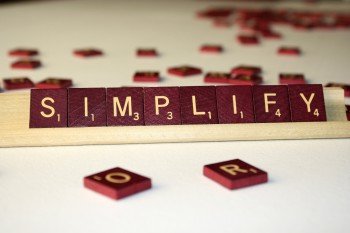

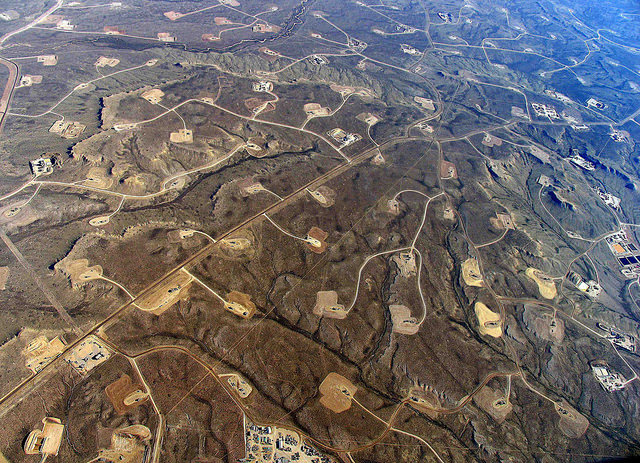
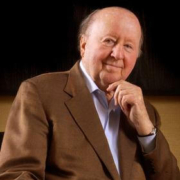


Thanks for an interesting post. I certainly agree with your basic premise.
But one minor quibble. You say that neo-Darwinist’s are devoted to random. This is not really accurate. Darwins conception of evolution was that changes were random but the selection of changes was certainly not random. Since Darwin, much has been learned. Modern evolutionary theory still does NOT consider selection to be random — although it can be in the sense that a meteorite “randomly hit Earth and did in a bunch of dinosaurs”. That is to say, “random” is not a trivial concept in either mathematics or as a physical approximation. As for changes in DNA (discovered long after Darwin) they are random in a sense but not entirely so — they still conform to other laws of chemistry, biology and physics. The modern theory of evolution is really quite sophisticated. Speaking as an interested layperson, I think that the way that DNA, epigenetic methylation, histones and environment interact in an evoutionary sense is a fascinating, ongoing voyage of exploration.
As a scientist (NOT a Scientismist) I really get a little bit annoyed when words like “devoted” are ascribed to my trade. We just study the evidence and logical frameworks built upon evidence and mathematically connecting different lines of evidence.
The demographic transition has long been questioned by serious scientists (not to be confused with Scientismists) — see Paul Colinvaux, “Fates of Nations: a biological theory of history” published in about 1980, and not to mention many works by Garrett Hardin. Personally, I don’t know of any present-day scholar who has done half so good a job as Colinvaux did 35 years ago.
“Our products must transform from high production and planned obsolescence to low production and durability.”
Thank you! Thank you! Thank you!
As someone who is devoted to fixing things until they can’t be fixed (or at least until i can’t fix them) anymore and who is old enough to remember, and still has artifacts from the days, when “durability” was still a “selling point” (the lonely Maytag repairman commercials), i am increasingly frustrated with newer shoddy products that can’t be fixed, though Superglue still comes in handy. I have a ’93 Buick, an ’82 snowblower, and an ’80 something washing machine (that i am trying to repair) – all made better originally than their “new” replacements would be. i realize that newer models are more energy efficient in operation but wonder what the energy costs of producing that new one are – and consider that if i drive my 20 mpg car 7000 miles/yr, isn’t it less polluting that driving a 40 mpg one 15,000 miles per year? Not to mention less wear and tear on infrastructure … And by having things fixed, paying local labor costs, instead of buying new ones, paying (often) foreign production (with slave labor) costs, aren’t i contributing to local economies more?
Sorry, but you have touched on something that has been frustrating me for some time now and that i continually comment about, when i get a chance ..
First, what the hell is a Scientismist? I’m a scientist but I don’t know what a scientismist is. Second, Paul Ehrlich has ben an excellent scholar on such important matters for over four decades; perhaps we need to revisit “The Population Bomb”.
What I fail to understand is that “The Daly News” editorials make so much common sense, humans are supposed to be so smart, and yet we continue to flounder with such elemental issues facing humanity. As Guy McPherson points out “nature bats last”. Over population and capitalism are the root causes of all humanities problems and they exacerbate each other. When are humans going to acknowledge reality and reject our collective denial?
“I’m a scientist but I don’t know what a scientismist is.”
An economist? :-)
Excellent point about the so-called “demographic transition,” which actually will increase dissipative structures in our current economy.
If you wanted to improve the biological efficiency of humans, we wouldn’t need to breed humans with smaller bodies. Just go vegan, especially in the developed countries. Nationwide veganism would free up about half of the land surface of the United States. Of course, if we keep burning coal and overpopulating the planet, veganism won’t matter. But veganism is a necessary, though not sufficient, element in achieving a workable steady-state economy.
Thank you for a stimulating article. We can have no reason to wish for more durable Mayflies. There is a place for planned obsolescence… which we see in nature and call ‘death’. You had it right in Beyond Growth, I think, to emphasize ‘optimality’. We don’t need maximal durability for everything. We need optimal durability, which can only be determined on a case by case after considering an artifact’s purpose and numerous other factors.
I wonder if we are blinded by our personal desires for long life, or, if blinded is too strong a word, biased? Shorter human lifespans (instead of shorter people) might be optimum. But who wants to consider that? It is not trivial to determine the optimal duration for an artifact. We see perfectly usable artifacts slip into the waste stream merely because they take up too much space in our overfull houses. We want our stuff to last as least as long as we do, so we can pass it on… we feel fine about jettisoning whatever we decide we have no more interest in (no matter its condition), but we get angry if it breaks on us before we’re “done” with it, even if we haven’t used it for years… few people are ever going to think, “another coffee table or another human, which is better?” But a lot of people could grasp, in the abstract, that we compete with our artifacts for existence. This is, for me, a novel way to think about it.
from Jamie ” But a lot of people could grasp, in the abstract, that we compete with our artifacts for existence. This is, for me, a novel way to think about it”
excellent! never thought about framing consumerism like this, but it absolutely makes sense and is pretty darn confrontational. i will be giving it a test run in conversations, see if it cuts through. cheers
“It is not trivial to determine the optimal duration for an artifact.” Consider the wise generalization about food stuffs “long shelf-life, short human life.” Other things which are made to resist biological degradation, such as arsenic treated posts, might also be wise to avoid. I had a friend who sharpened his posts for driving, then partially burned the ends to add rot resistance. Another good strategy, which is a version of “longer life,” is for a product to degrade into another usage. I have used newspaper/cardboard for mulch layers, along with woodchips on top, for several decades. Biochar/terra-pretta soil is also a longer-lived carbon for the soil. Repurposing of degraded items can go a long way, and needs only our imagination, and perhaps a little bit of need doesn’t hurt. I have heard of old cars used as animal shelters, for instance. Our move away from common disposability would go a long way toward putting us back into our right minds, and maybe we will again be saying “, use it up, wear it out, make do or do without.”